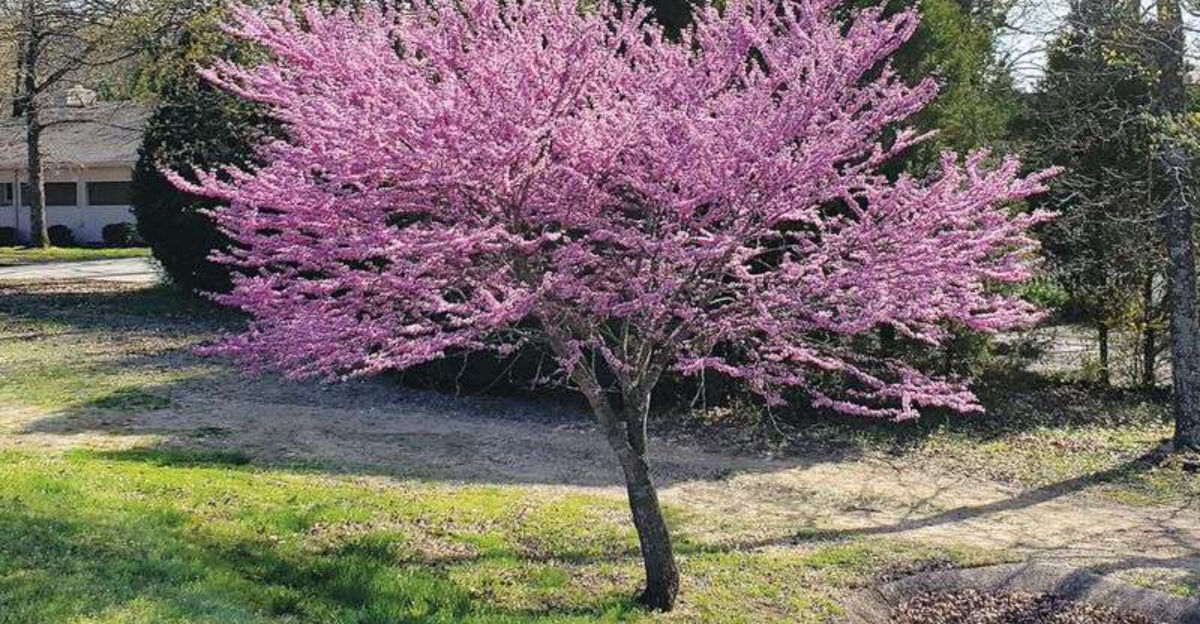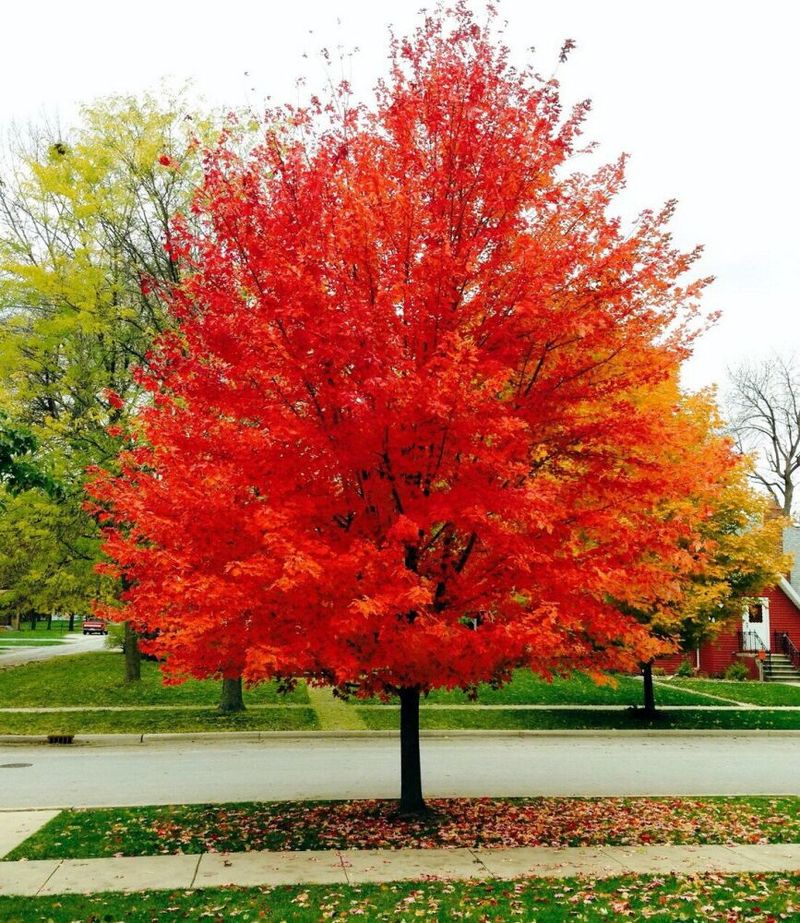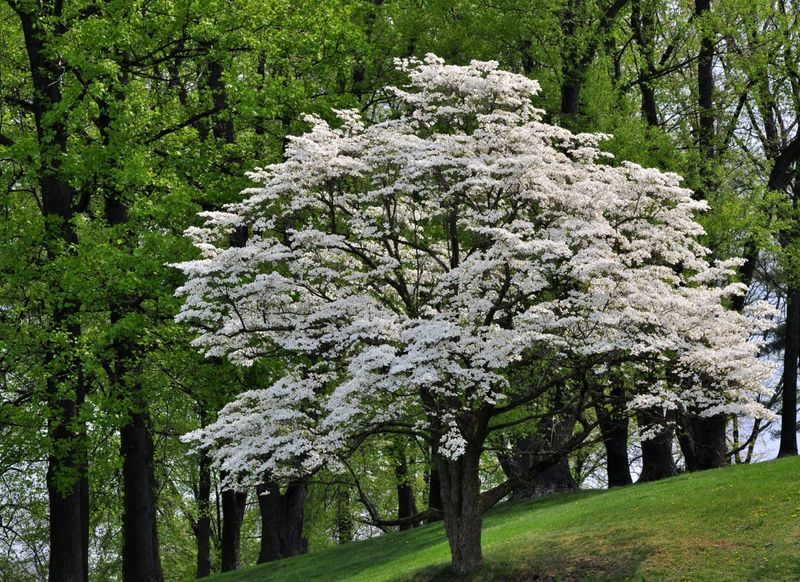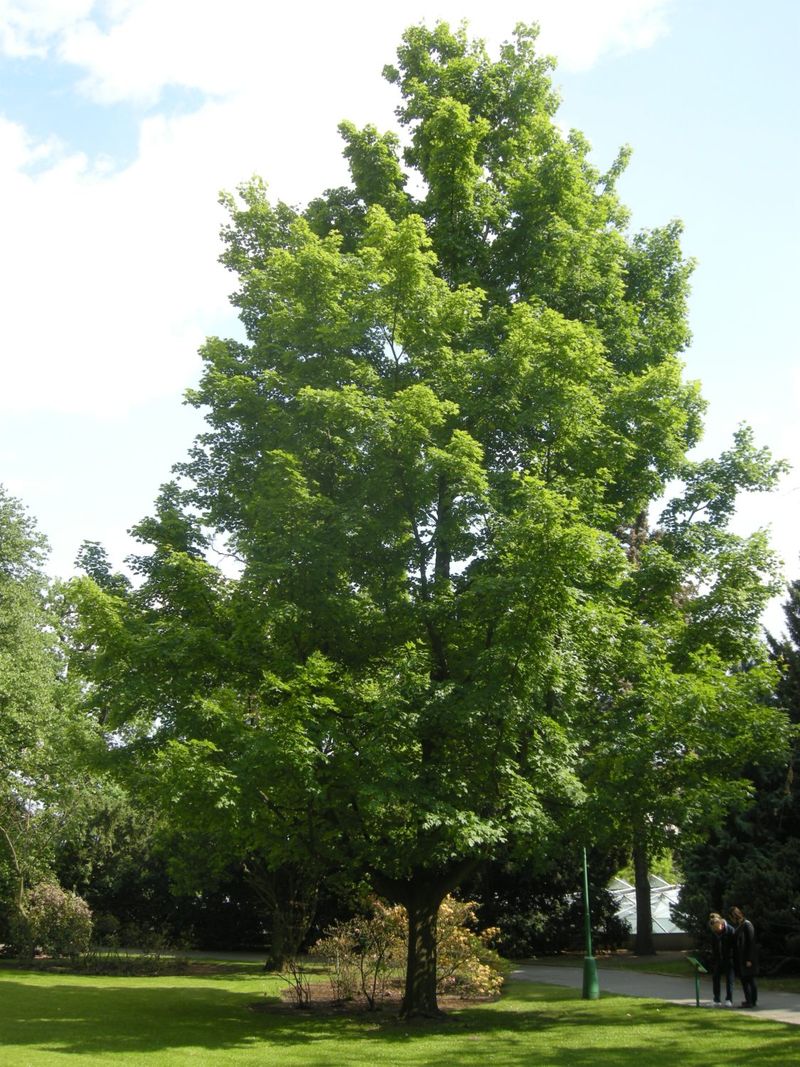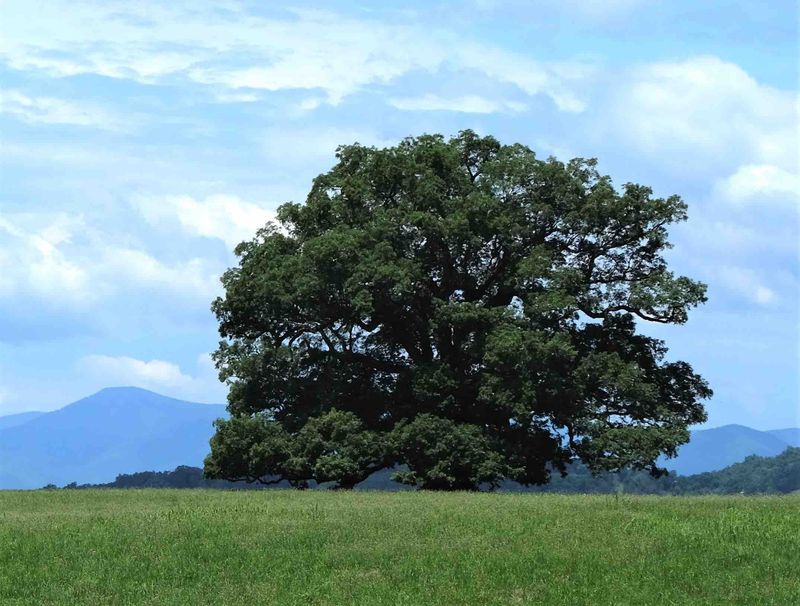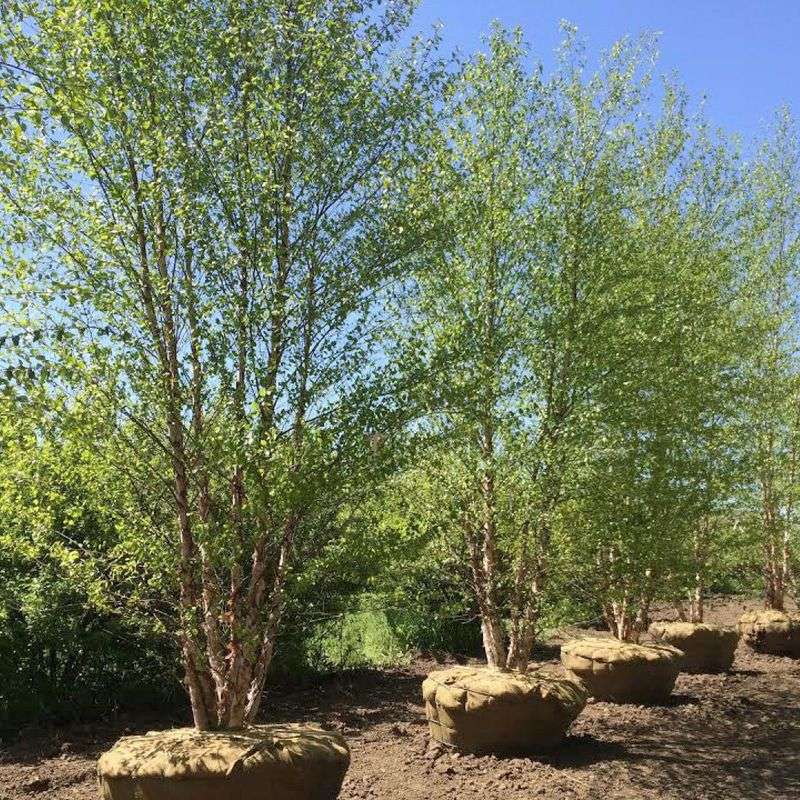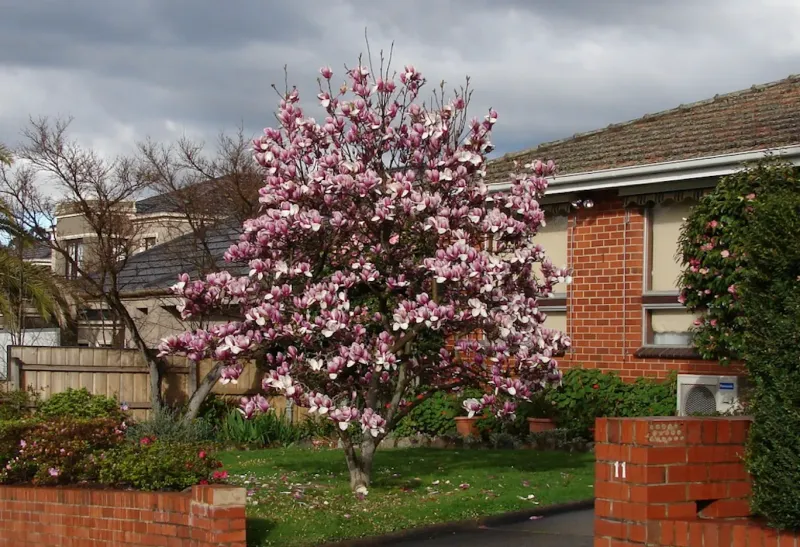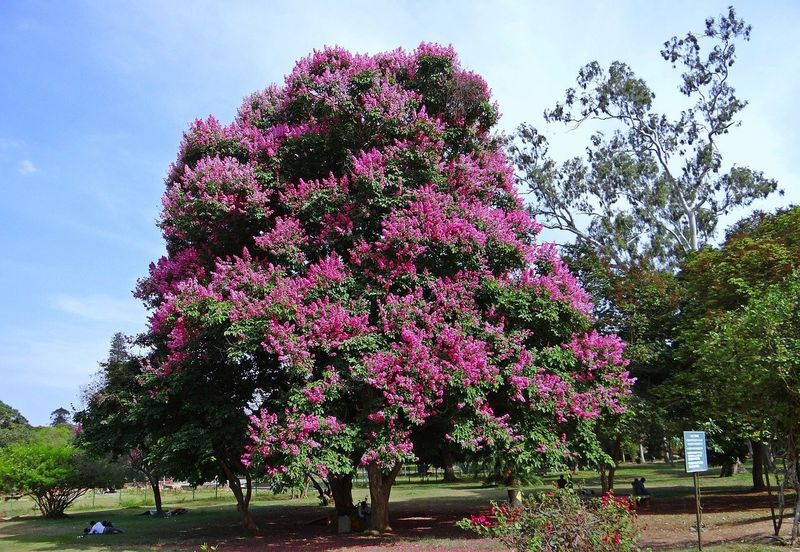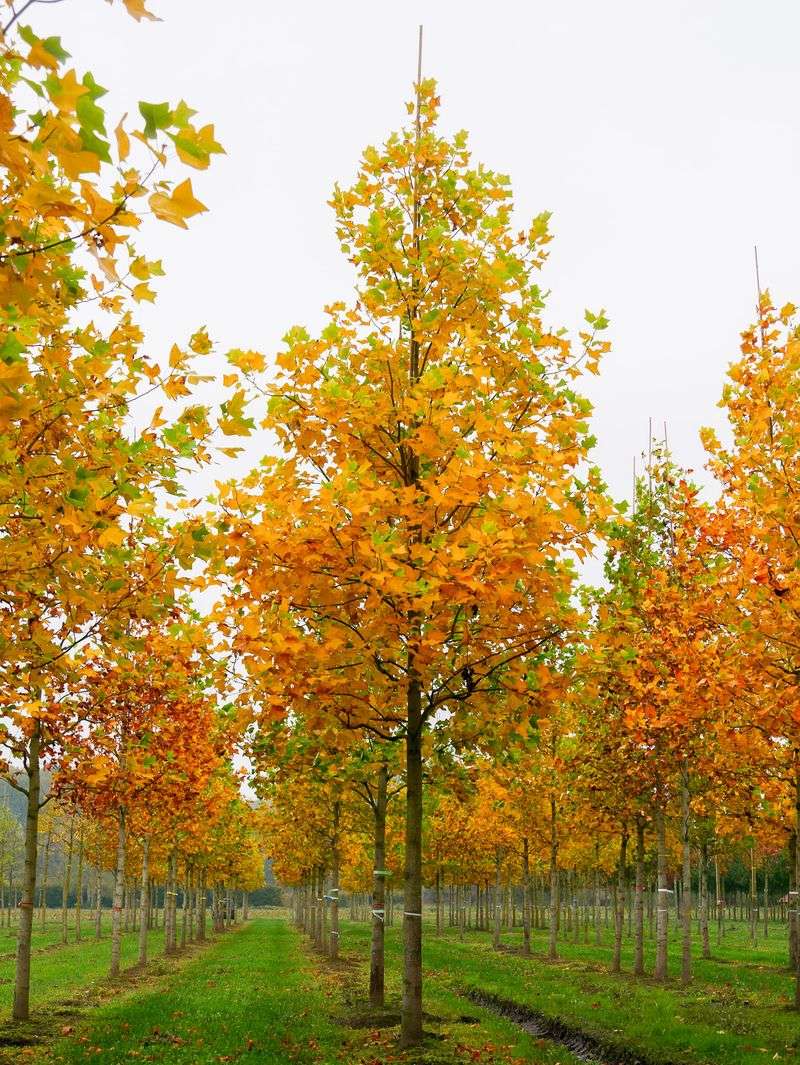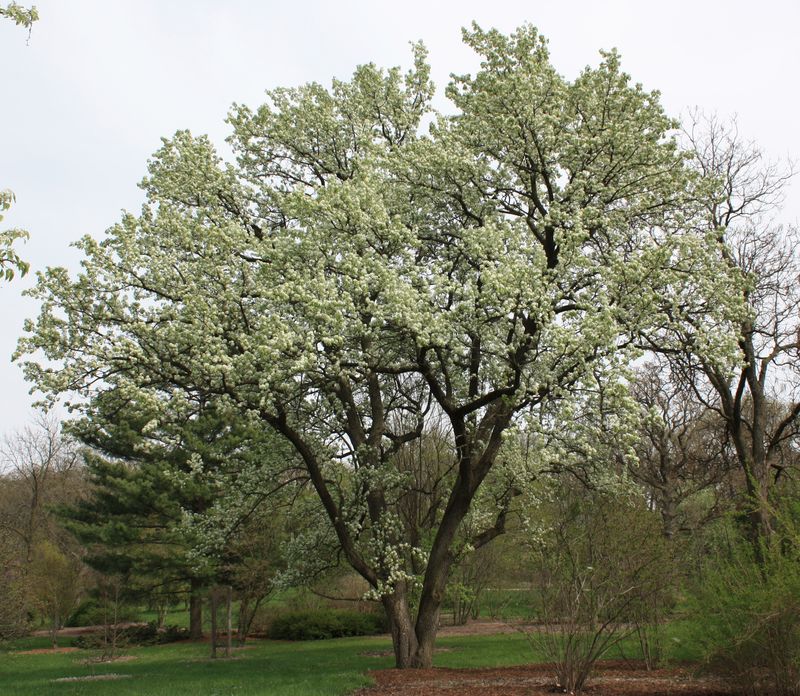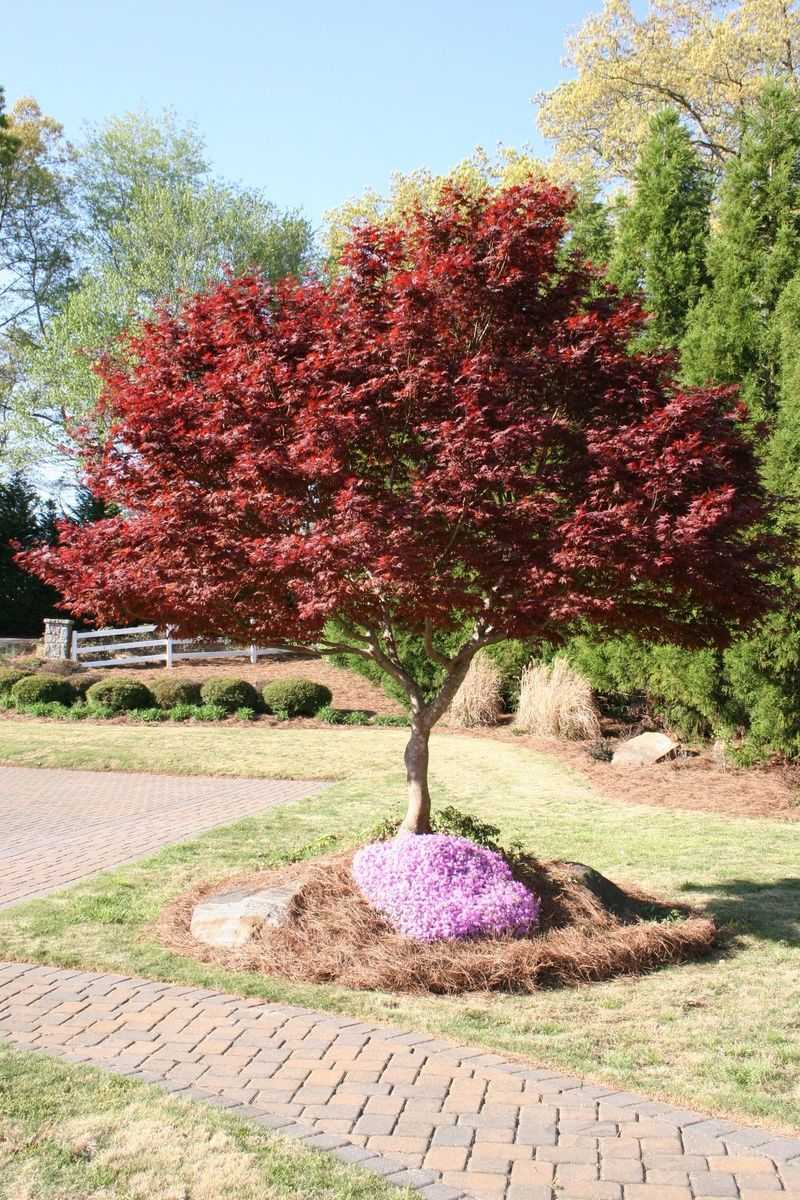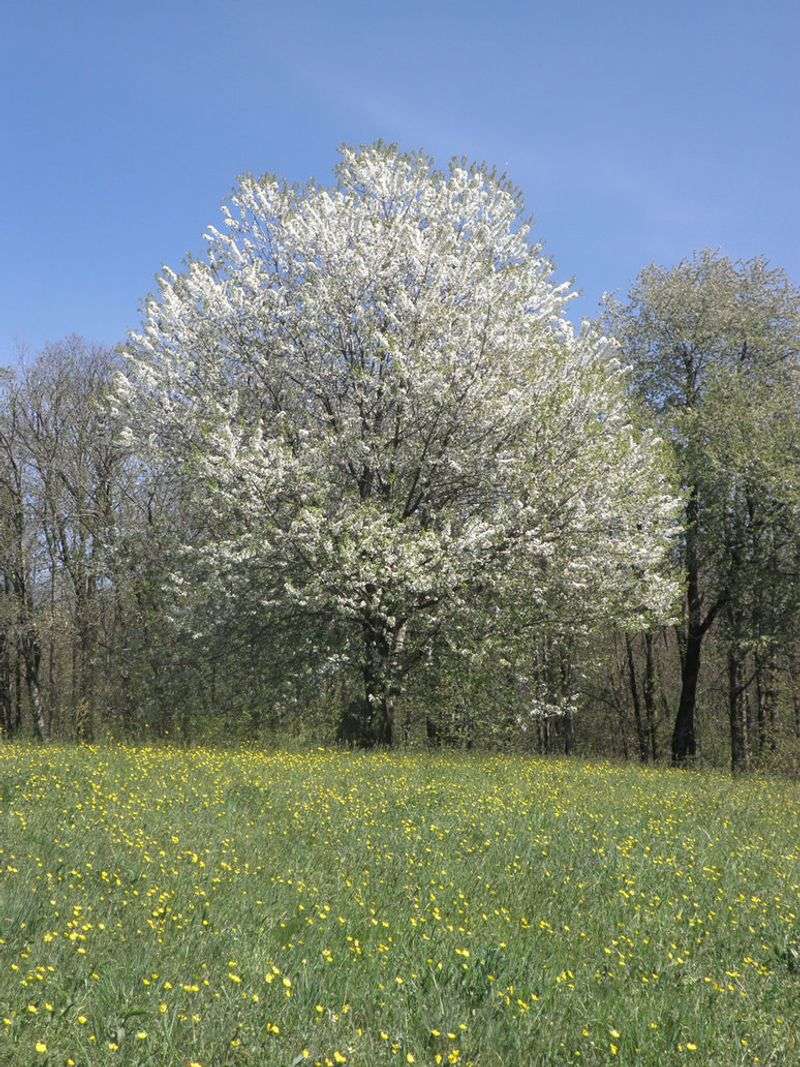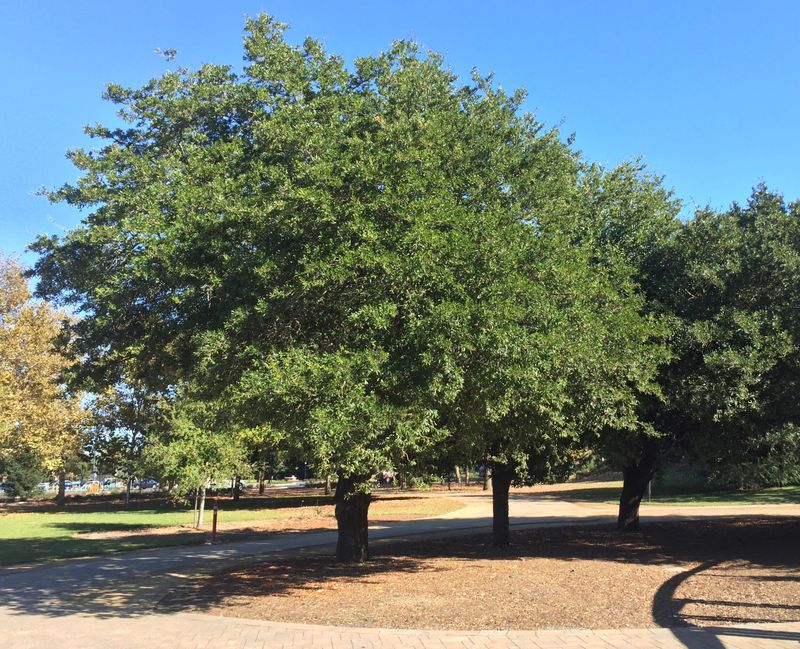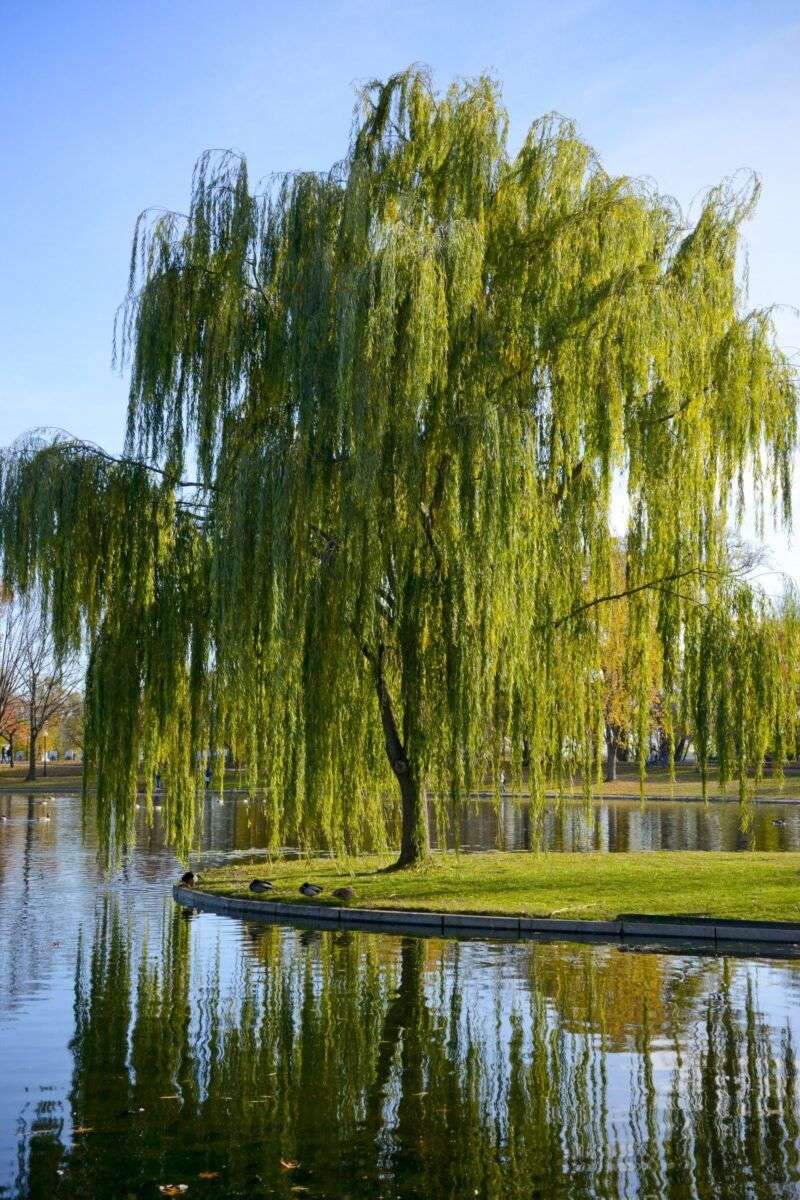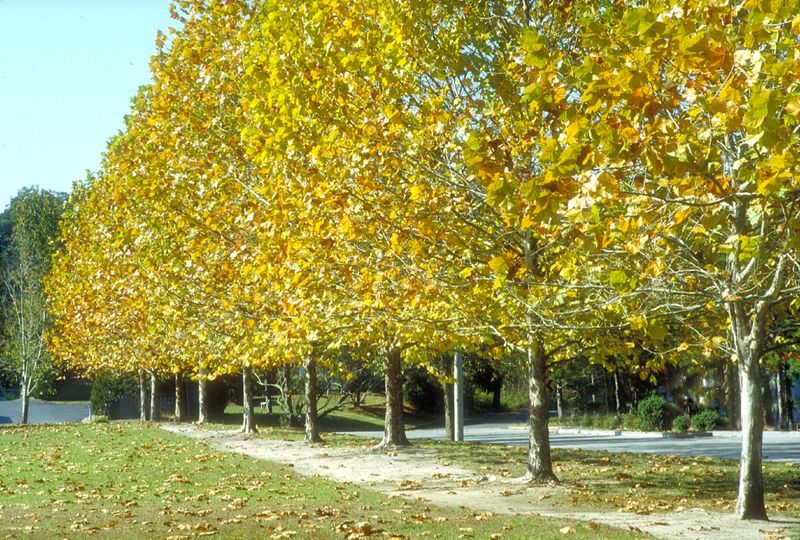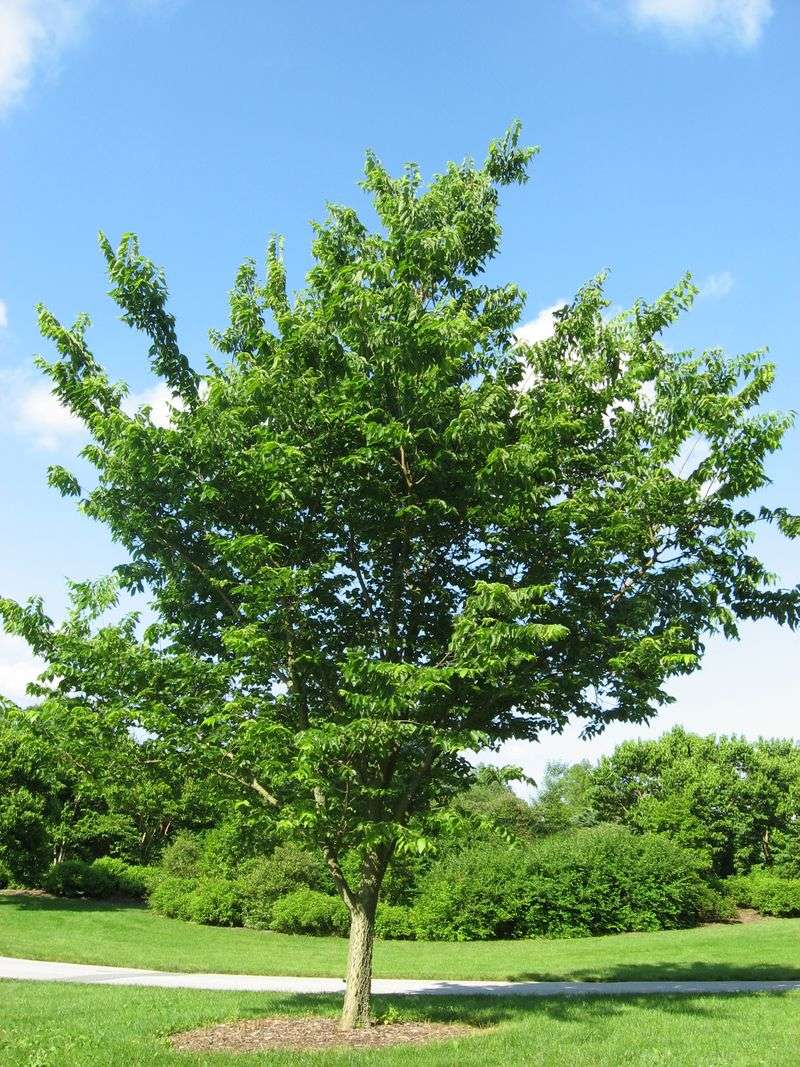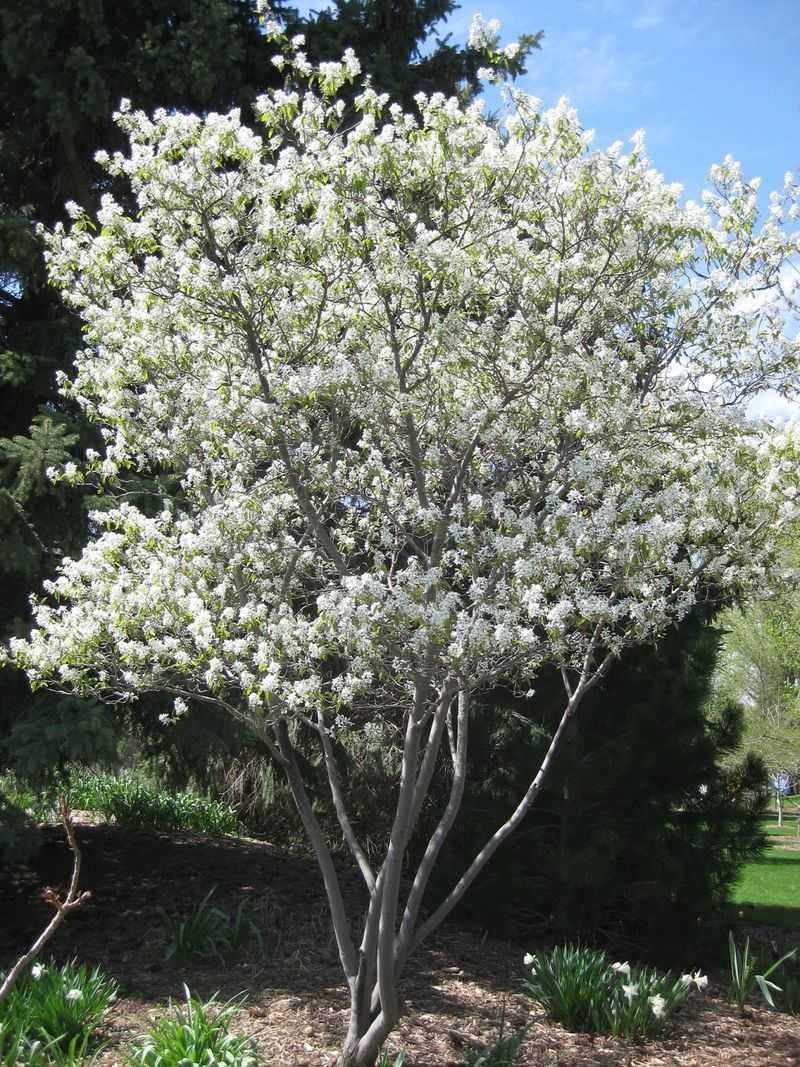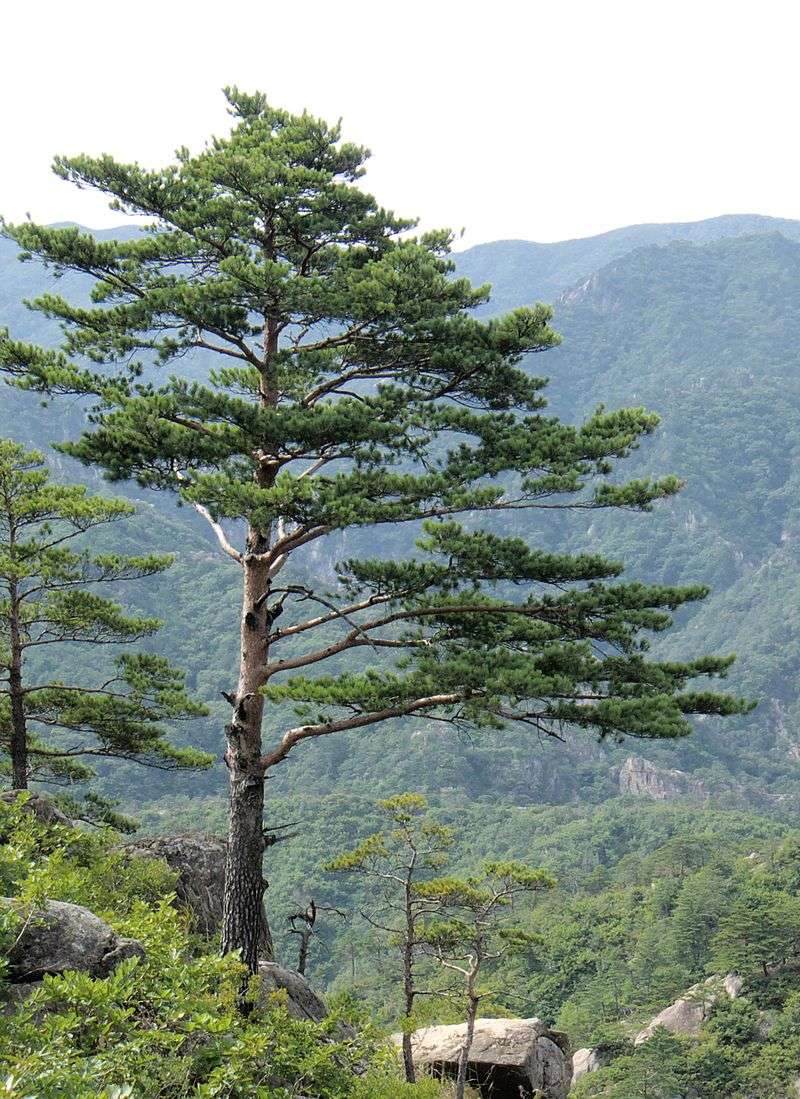March marks a time of renewal, making it the perfect month to plant trees across America. Whether you’re aiming for a vibrant garden or a sustainable landscape, choosing the right tree is crucial.
This guide covers 20 outstanding trees that thrive when planted in March. From fast-growing varieties to those with breathtaking blooms, there’s a perfect tree for any setting.
Explore these top picks that will enhance your garden’s beauty and environmental value.
1. Red Maple (Acer rubrum)
The Red Maple is celebrated for its rapid growth and stunning fall colors. In spring, its red buds bloom into tiny flowers, providing early food for pollinators. As summer approaches, its green leaves create a dense canopy, offering shade and cooling.
In autumn, the Red Maple transforms, displaying vivid red and orange foliage. This beauty attracts many gardeners, making it a popular choice for landscapes.
Its adaptability to various soil types and conditions, from wet to dry, ensures it thrives in different regions across America.
2. Dogwood (Cornus florida)
Dogwoods are quintessential spring bloomers, known for their showy white or pink flowers that appear before the leaves. These blooms attract various pollinators, supporting local ecosystems.
Dogwoods also offer vibrant red leaves in fall and glossy red berries that persist into winter, providing food for birds and wildlife. With their moderate size and graceful form, Dogwoods are ideal for small gardens or as understory trees.
They prefer well-drained, acidic soils and partial shade, making them versatile for different landscapes.
3. American Elm (Ulmus americana)
The American Elm is a classic shade tree, known for its elegant vase shape and resilience. Once a staple in urban landscapes, it has made a comeback due to disease-resistant cultivars.
Its large canopy provides ample shade, reducing urban heat and energy costs. In fall, its leaves turn a golden yellow, adding seasonal interest. This adaptable tree can grow in a variety of soil types, from wet to dry, and tolerates urban pollution, making it ideal for city environments.
4. Eastern Redbud (Cercis canadensis)
Eastern Redbuds are among the first trees to bloom in spring, their branches adorned with clusters of pink flowers. These blooms are a magnet for bees and butterflies, enhancing biodiversity.
Throughout summer, the heart-shaped leaves provide a lush green backdrop, transitioning to yellow in fall. This tree’s striking form adds architectural interest to gardens. Redbuds thrive in various soils, from clay to sandy, and can tolerate both sun and partial shade, making them adaptable to many environments.
5. Sugar Maple (Acer saccharum)
Famous for its brilliant autumn colors and maple syrup production, the Sugar Maple is a cherished tree in America. Its leaves turn a vibrant mix of red, orange, and yellow in fall, creating breathtaking landscapes.
In spring, pale yellow flowers appear, contributing to the tree’s charm. Its dense foliage provides excellent shade during summer months. This tree prefers well-drained, slightly acidic soils and full sunlight, thriving in cool climates. It’s an excellent choice for large yards or rural settings.
6. White Oak (Quercus alba)
White Oaks are revered for their strength and longevity, often living for centuries. Their massive branches provide habitat and food for a variety of native wildlife. In fall, their leaves display a rich spectrum of colors from brown to red, and their acorns are a crucial food source for animals.
White Oaks prefer well-drained soils and full sunlight but are adaptable to various conditions. These trees are an excellent choice for large landscapes where they can grow to their full potential.
7. River Birch (Betula nigra)
River Birch trees are distinct for their peeling, papery bark, which adds texture to any landscape. They thrive near water, making them perfect for riverbanks or wet areas. In spring, small catkins adorn the branches, while in summer, the leaves create dappled shade. Their vibrant yellow fall foliage adds seasonal color.
These trees are resistant to diseases and pests, making them low-maintenance. They adapt well to various soil types, including clay and sandy soils, and prefer moist environments.
8. Magnolia (Magnolia spp.)
Magnolia trees are prized for their large, fragrant flowers that bloom in early spring. These showy blossoms come in various colors, including white, pink, and purple. Their glossy, dark green leaves provide an attractive backdrop year-round, while the tree’s elegant form adds beauty to any garden.
Magnolias prefer well-drained, acidic soils and full to partial sunlight. They are often planted as specimen trees, making a statement in both urban and rural landscapes.
9. Crape Myrtle (Lagerstroemia indica)
Crape Myrtles are celebrated for their long-lasting summer blooms, which come in an array of colors including pink, red, and white. These flowers attract butterflies and hummingbirds, enhancing garden life.
The tree’s smooth, mottled bark adds visual interest, especially in winter when leaves have fallen. In fall, the foliage turns a brilliant orange or red. Crape Myrtles thrive in hot, sunny climates and are drought-tolerant, making them ideal for Southern gardens. They can be used as standalone specimens or in group plantings.
10. Tulip Tree (Liriodendron tulipifera)
Tulip Trees, also known as Yellow Poplars, are fast-growing and can reach impressive heights. Their distinctive, tulip-shaped flowers appear in late spring, offering nectar to bees and other pollinators.
Throughout summer, their large, bright green leaves create shade and a lush appearance. In fall, these leaves turn a golden yellow, adding seasonal beauty. Tulip Trees prefer well-drained soils and full sunlight, thriving in both urban and rural settings. They are excellent for providing shade and enhancing large landscapes.
11. Bradford Pear (Pyrus calleryana)
Bradford Pears are known for their abundant spring blossoms, which create a stunning display of white flowers. These blooms are often one of the first signs of spring. The tree’s glossy, dark green leaves provide a dense canopy during summer, and in fall, they turn shades of red and purple.
While popular for their ornamental value, Bradford Pears are considered invasive in some regions due to their rapid spread. They thrive in a range of soil types and conditions but require careful management.
12. Japanese Maple (Acer palmatum)
Japanese Maples are cherished for their striking foliage and elegant form. Their leaves come in various shapes and colors, from deep red to vibrant green, adding beauty throughout the seasons. In spring, small flowers may appear, followed by winged seeds.
The tree’s branching pattern adds architectural interest to gardens. Japanese Maples prefer well-drained, slightly acidic soils and partial shade. They thrive in both traditional Japanese gardens and modern landscapes, often used as focal points or in container plantings.
13. Black Cherry (Prunus serotina)
Black Cherry trees are notable for their dark, shiny bark and clusters of small, fragrant white flowers in spring. These blooms attract pollinators, supporting local biodiversity. In summer, they produce small, dark cherries that are a food source for birds and wildlife.
Their leaves turn a vibrant yellow in fall, adding seasonal color. These trees thrive in well-drained soils and full to partial sunlight. Black Cherries are excellent for natural settings and provide habitat for various species.
14. Silver Maple (Acer saccharinum)
Silver Maples are fast-growing trees known for their large, spreading canopies and distinctive leaves with silvery undersides. These features provide ample shade and cooling, especially in urban areas. In spring, small clusters of red flowers appear before the leaves, offering early interest.
The tree’s foliage turns vibrant shades of yellow and red in fall. Silver Maples are tolerant of various soils and conditions, including wet areas. However, their rapid growth requires space, making them suitable for large landscapes.
15. Southern Live Oak (Quercus virginiana)
Southern Live Oaks are iconic in the South, known for their sprawling branches and evergreen leaves. Often draped in Spanish moss, these trees create picturesque scenes. Their dense, leathery leaves provide year-round shade, while their acorns support local wildlife. The tree’s robust structure makes it resistant to strong winds.
Live Oaks thrive in various soils, from sandy to clay, and prefer full sunlight. They are ideal for large landscapes where they can mature to their impressive size.
16. Weeping Willow (Salix babylonica)
Weeping Willows are known for their graceful, sweeping branches that create a tranquil atmosphere by water bodies. These branches sway gently in the breeze, adding movement to gardens. In spring, small catkins appear, while in summer, the tree provides cooling shade with its dense foliage.
Willows are often planted for their aesthetic appeal and their ability to stabilize soil. They thrive in moist soils, particularly near ponds or lakes, and prefer full sun. Their rapid growth makes them suitable for quick landscape transformations.
17. Sycamore (Platanus occidentalis)
Sycamore trees are characterized by their large size and distinctive mottled bark, which peels away to reveal a patchwork of colors. This unique feature adds winter interest when the tree is bare. In spring, Sycamores produce small, globular seed clusters, while in summer, their broad leaves create ample shade.
In fall, the leaves turn a golden yellow, adding seasonal beauty. These trees are adaptable to various soils, including moist and compacted urban soils. Their robust nature makes them excellent for large public spaces.
18. Hackberry (Celtis occidentalis)
Hackberry trees are valued for their adaptability and resilience, thriving in various soil conditions and climates. Their rough, warty bark provides year-round interest. In spring, small greenish flowers attract pollinators, while in fall, the tree produces dark purple berries, feeding birds and wildlife.
The foliage turns a lovely yellow in autumn. Hackberries are drought-tolerant and can withstand urban pollution, making them ideal for city environments and open landscapes alike.
19. Serviceberry (Amelanchier spp.)
Serviceberry trees are multi-seasonal stars, offering delicate white flowers in spring, followed by edible berries in summer. These berries attract birds and can be enjoyed by humans as well. In fall, the foliage turns brilliant shades of orange and red, adding a splash of color.
The tree’s graceful form and moderate size make it ideal for small gardens. Serviceberries thrive in well-drained soils and full to partial sunlight. They are great for naturalized settings or as specimen trees in garden landscapes.
20. Pine Trees (Pinus spp.)
Pine trees are evergreen conifers that provide year-round greenery and habitat for wildlife. There are various species, each offering unique characteristics, from the long-needled Eastern White Pine to the rugged Ponderosa Pine. Their resinous wood is valuable for timber, while their needles and cones add texture to landscapes.
Pines are often used for windbreaks or as privacy screens. These trees thrive in well-drained soils and full to partial sunlight. Their adaptability makes them suitable for diverse regions, from coastal areas to mountainous terrains.
